Two months ago, you might have noticed students walking around the university carrying clear plastic containers of various cuisines, or maybe you had friends eating out of them, or even tried one yourself in support of your friends selling it. Well, for those of you who did not know the purpose behind this promotional activity, International Medical University (IMU) proudly introduces Unveil the Treasure of Health, brought to you by Year 2 students of Nutrition and Dietetics with Nutrition (NDT) programmes. 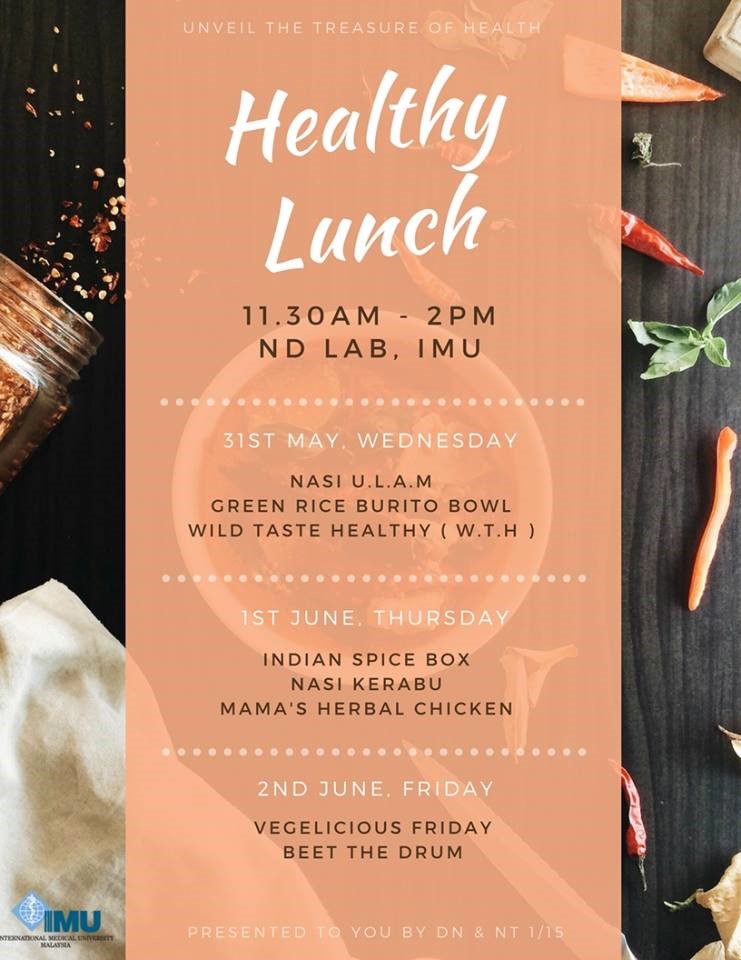 This project, carried out between 31 May to 2 June, involved 79 students of NDT 1/15 who were divided into 8 groups of four different cuisines – Chinese, Malay, Indian and Vegetarian. After countless meetings and discussions among groups for the nth time, NDT 1/15 came up with Mama’s Herbal Chicken and Beet the Drum (Chinese), Nasi U.L.A.M. and Nasi Kerabu (Malay), Wild Taste Healthy (W.T.H.) and Indian Spice Box (Indian), and Green Rice Burrito Bowl and Vegelicious Friday (Vegetarian). The meals were priced at RM10 except for the vegetarian meals which was priced at RM8. Although they were only required to prepare 50 healthy lunch sets in a university food service establishment, some managed to sell up to a whooping 71 sets.
This project, carried out between 31 May to 2 June, involved 79 students of NDT 1/15 who were divided into 8 groups of four different cuisines – Chinese, Malay, Indian and Vegetarian. After countless meetings and discussions among groups for the nth time, NDT 1/15 came up with Mama’s Herbal Chicken and Beet the Drum (Chinese), Nasi U.L.A.M. and Nasi Kerabu (Malay), Wild Taste Healthy (W.T.H.) and Indian Spice Box (Indian), and Green Rice Burrito Bowl and Vegelicious Friday (Vegetarian). The meals were priced at RM10 except for the vegetarian meals which was priced at RM8. Although they were only required to prepare 50 healthy lunch sets in a university food service establishment, some managed to sell up to a whooping 71 sets. 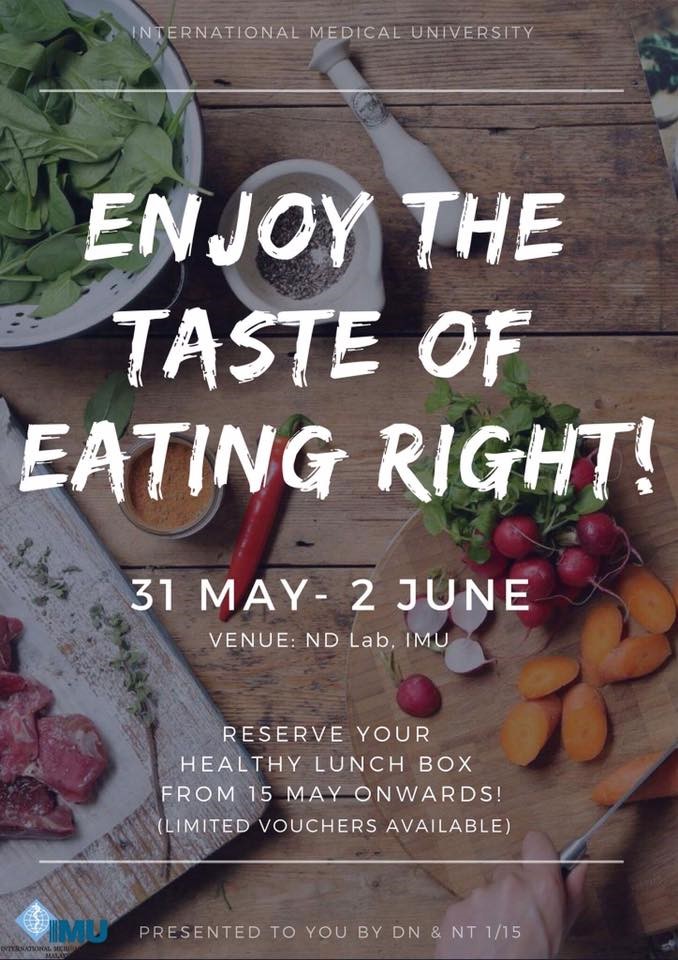 As a part of Food Service Management Module in their degree programmes, students learnt about the food service industry and applied the knowledge and skills learnt in this project. Students translated core dietetics knowledge into nutritional needs of the IMU community to modified healthy food choices while understanding the needs of a customer. “We took into account the palatability and the economic viability of the lunch sets we produced and incorporated healthy aspects into it so that it would be a wholesome meal that is both affordable and tasty,” said Chan Ser Chyi, the batch representative of DN 1/15. The students demonstrated entrepreneurship skills in this project by promoting their healthy lunch sets via social media, Facebook, under the same project name. The healthy and nutritious lunch menus met the Malaysian Dietary Guidelines (MDG) 2010 and the Malaysian Food Pyramid in terms of calorie intake, serving size, sodium, fibre and ideal proportions of carbohydrate, protein and fat. The students carried this out by calculating the ideal calorie intake and serving size for students and staff who spend almost half their day at the University. They also ensured that the nutrients were within the recommended daily intake. Plenty of fruits and vegetables were incorporated into the lunch menu such as Beet the Drum’s meal that served blanched bak choy, fresh cucumber slices, watermelon and honeydew. Packed with lots of vitamins, minerals, phytochemicals and antioxidants, fruits and vegetables help to protect us from multitude of diseases.
As a part of Food Service Management Module in their degree programmes, students learnt about the food service industry and applied the knowledge and skills learnt in this project. Students translated core dietetics knowledge into nutritional needs of the IMU community to modified healthy food choices while understanding the needs of a customer. “We took into account the palatability and the economic viability of the lunch sets we produced and incorporated healthy aspects into it so that it would be a wholesome meal that is both affordable and tasty,” said Chan Ser Chyi, the batch representative of DN 1/15. The students demonstrated entrepreneurship skills in this project by promoting their healthy lunch sets via social media, Facebook, under the same project name. The healthy and nutritious lunch menus met the Malaysian Dietary Guidelines (MDG) 2010 and the Malaysian Food Pyramid in terms of calorie intake, serving size, sodium, fibre and ideal proportions of carbohydrate, protein and fat. The students carried this out by calculating the ideal calorie intake and serving size for students and staff who spend almost half their day at the University. They also ensured that the nutrients were within the recommended daily intake. Plenty of fruits and vegetables were incorporated into the lunch menu such as Beet the Drum’s meal that served blanched bak choy, fresh cucumber slices, watermelon and honeydew. Packed with lots of vitamins, minerals, phytochemicals and antioxidants, fruits and vegetables help to protect us from multitude of diseases.
Additionally, the visual presentation of the meals was equally as enticing as it was healthy, with the use of different coloured ingredients to bring the food to life. All in all, the menus chosen were aimed at depicting how a healthy menu can also be appealing to both the eyes and tongue. As the saying goes, ‘you eat with your eyes first’.
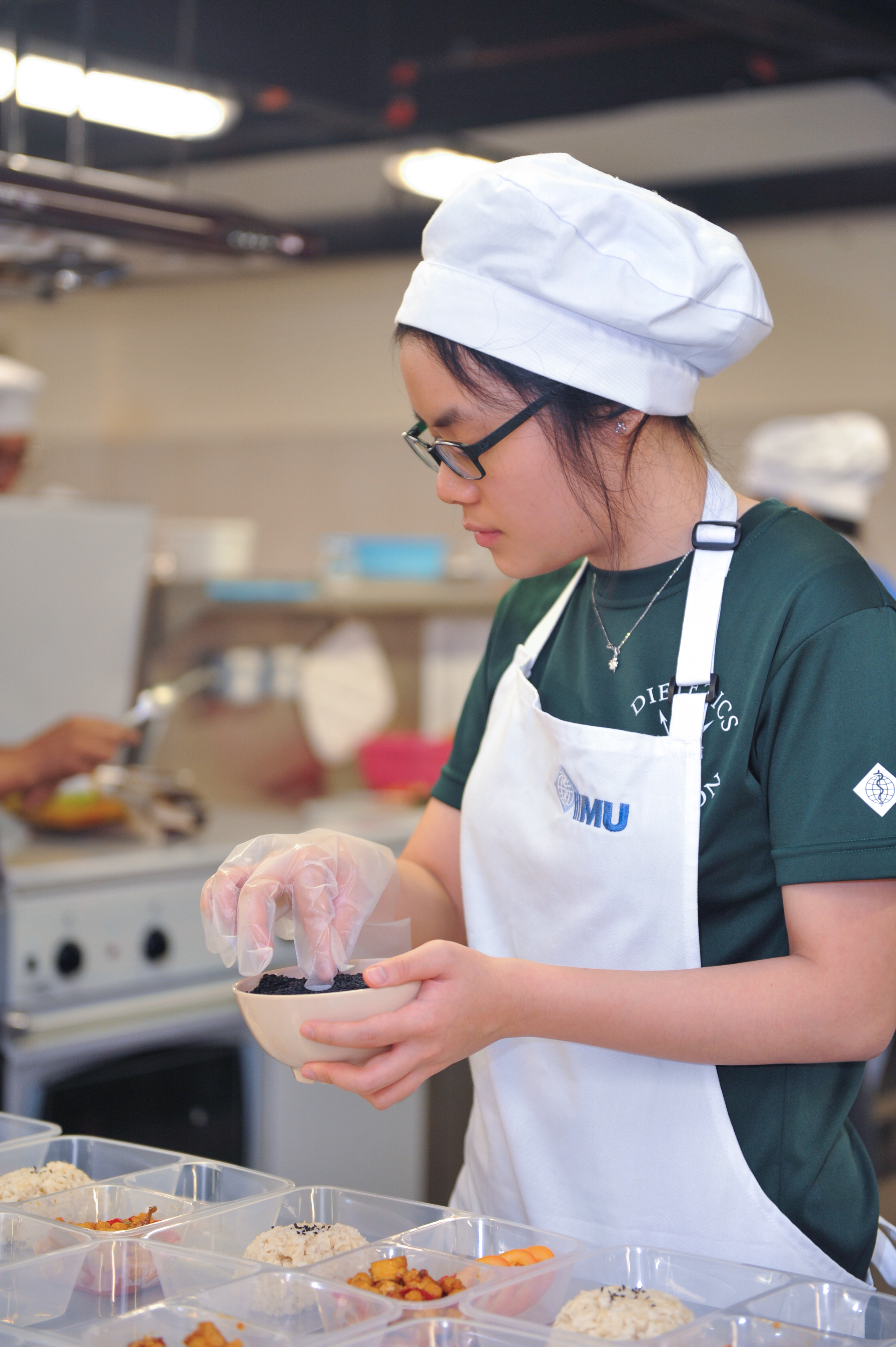 The IMU community who purchased the lunchbox provided feedback through customer satisfaction forms, of which most noted that the lunchbox prepared were healthy, balanced and delicious. In one anonymous feedback, the appearance of the lunchbox was very colourful and attractive, thus playing a role in increasing their appetite. The customers’ satisfaction was high, with an astounding average of 4/5, which took into account aspects such as taste, texture and value-for-money. As most food service industries would receive, there were some feedback for improvements, such as to improve the texture of the jelly so that it is smoother, as well as to work on the taste and texture as the flesh of some chicken was not juicy enough and the marinade of chicken was insufficient and lacked taste. However, the overall feedback from the IMU community was good. This project was definitely a learning experience for the NDT students. As most of them were not very skillful in cooking, they had trouble coming up with a meal that met the required macronutrients and micronutrients as specified by the MDG. In doing so, students tried to reduce certain ingredients to meet the recommended nutrient intakes (RNIs) to no avail when adjustments were not workable as it was either too tasteless or in too tiny portions.
The IMU community who purchased the lunchbox provided feedback through customer satisfaction forms, of which most noted that the lunchbox prepared were healthy, balanced and delicious. In one anonymous feedback, the appearance of the lunchbox was very colourful and attractive, thus playing a role in increasing their appetite. The customers’ satisfaction was high, with an astounding average of 4/5, which took into account aspects such as taste, texture and value-for-money. As most food service industries would receive, there were some feedback for improvements, such as to improve the texture of the jelly so that it is smoother, as well as to work on the taste and texture as the flesh of some chicken was not juicy enough and the marinade of chicken was insufficient and lacked taste. However, the overall feedback from the IMU community was good. This project was definitely a learning experience for the NDT students. As most of them were not very skillful in cooking, they had trouble coming up with a meal that met the required macronutrients and micronutrients as specified by the MDG. In doing so, students tried to reduce certain ingredients to meet the recommended nutrient intakes (RNIs) to no avail when adjustments were not workable as it was either too tasteless or in too tiny portions. 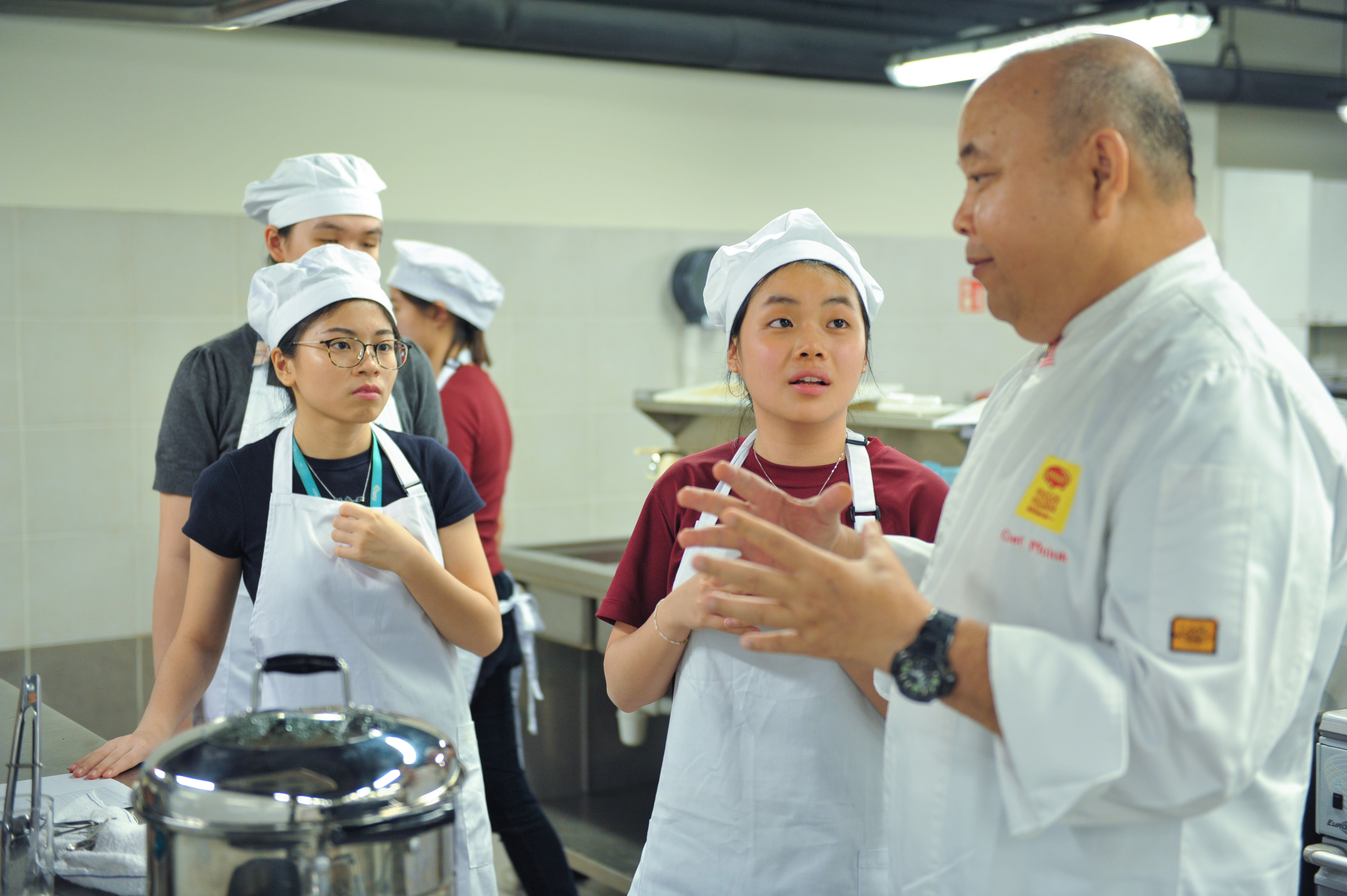
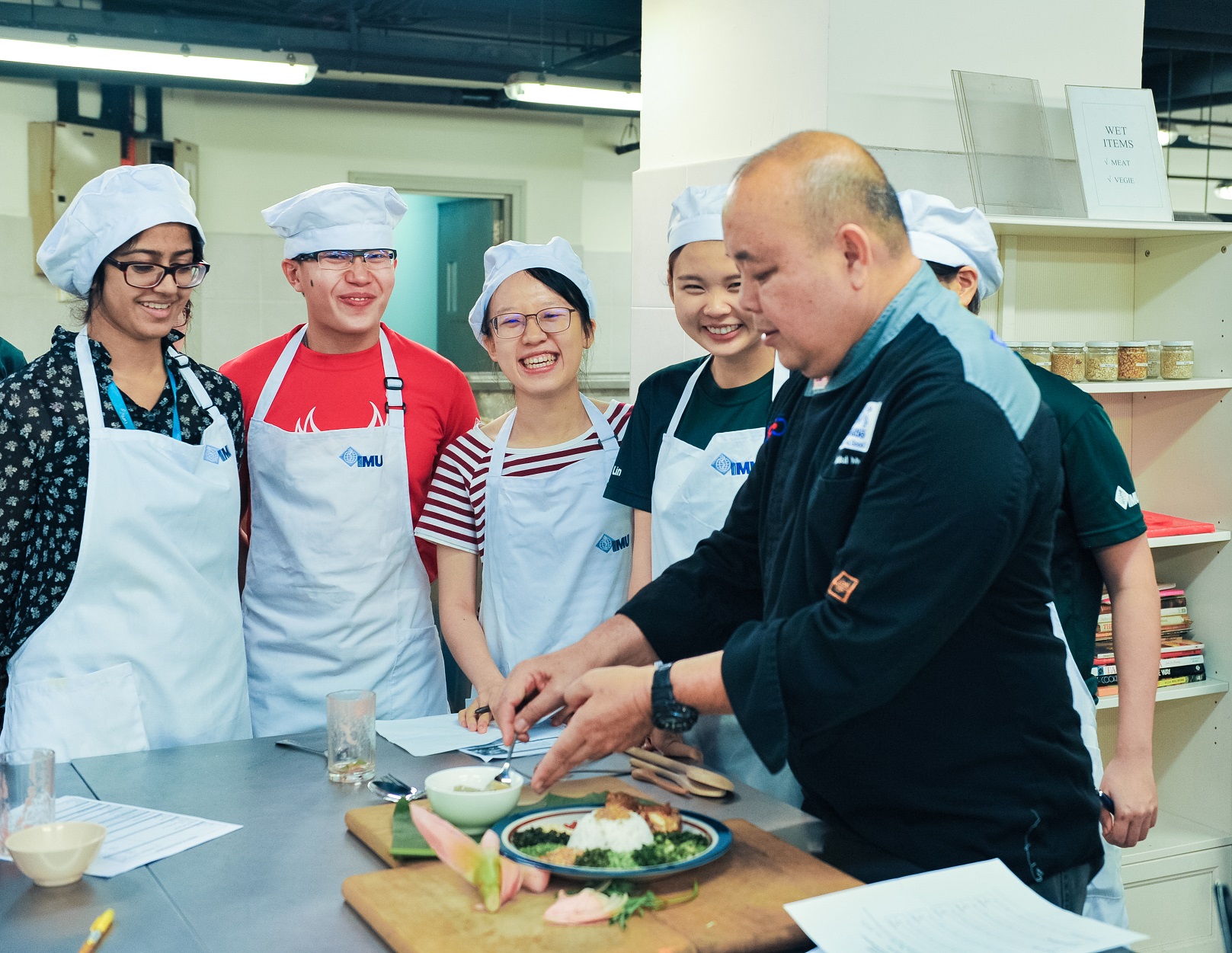
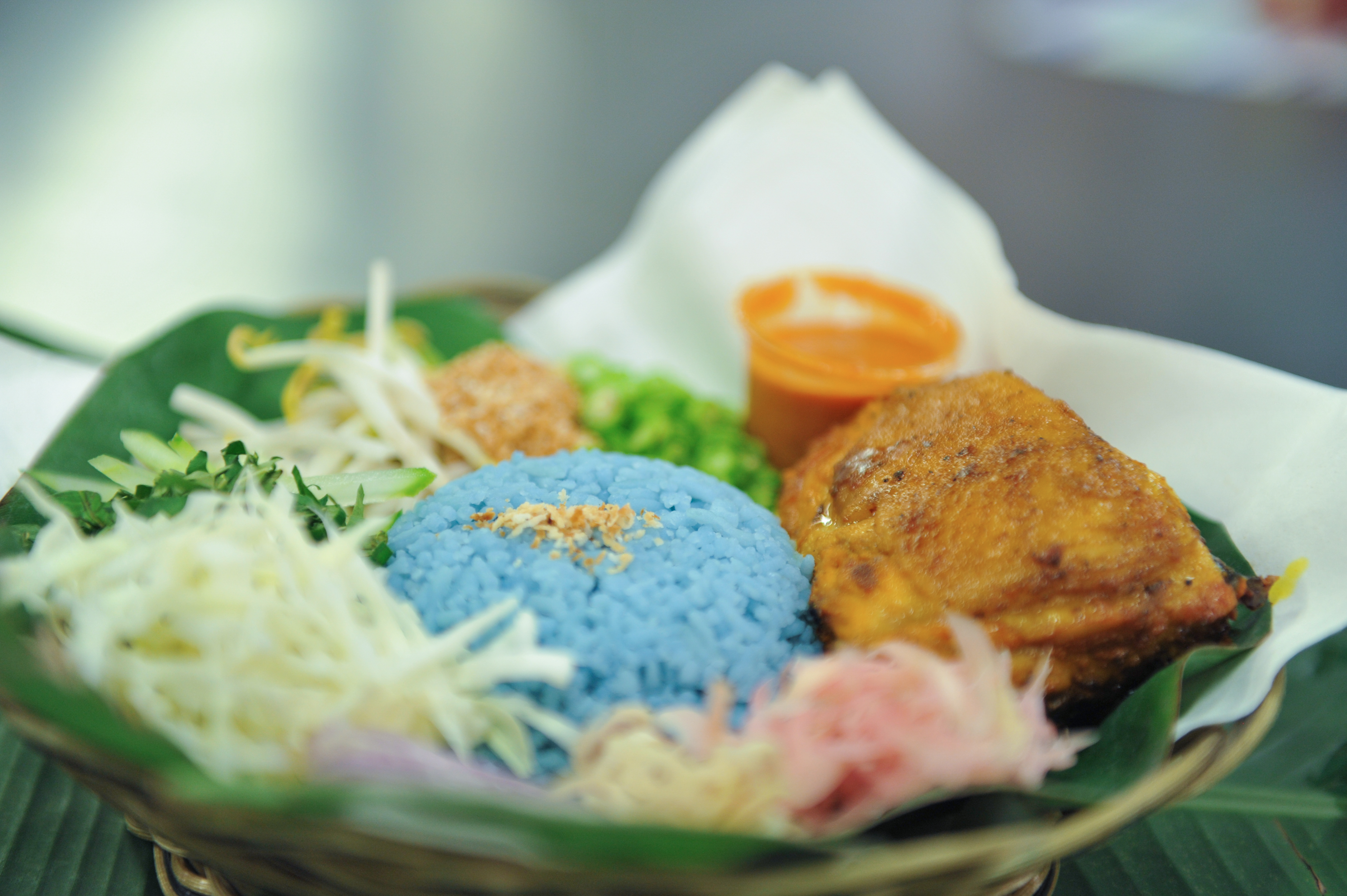
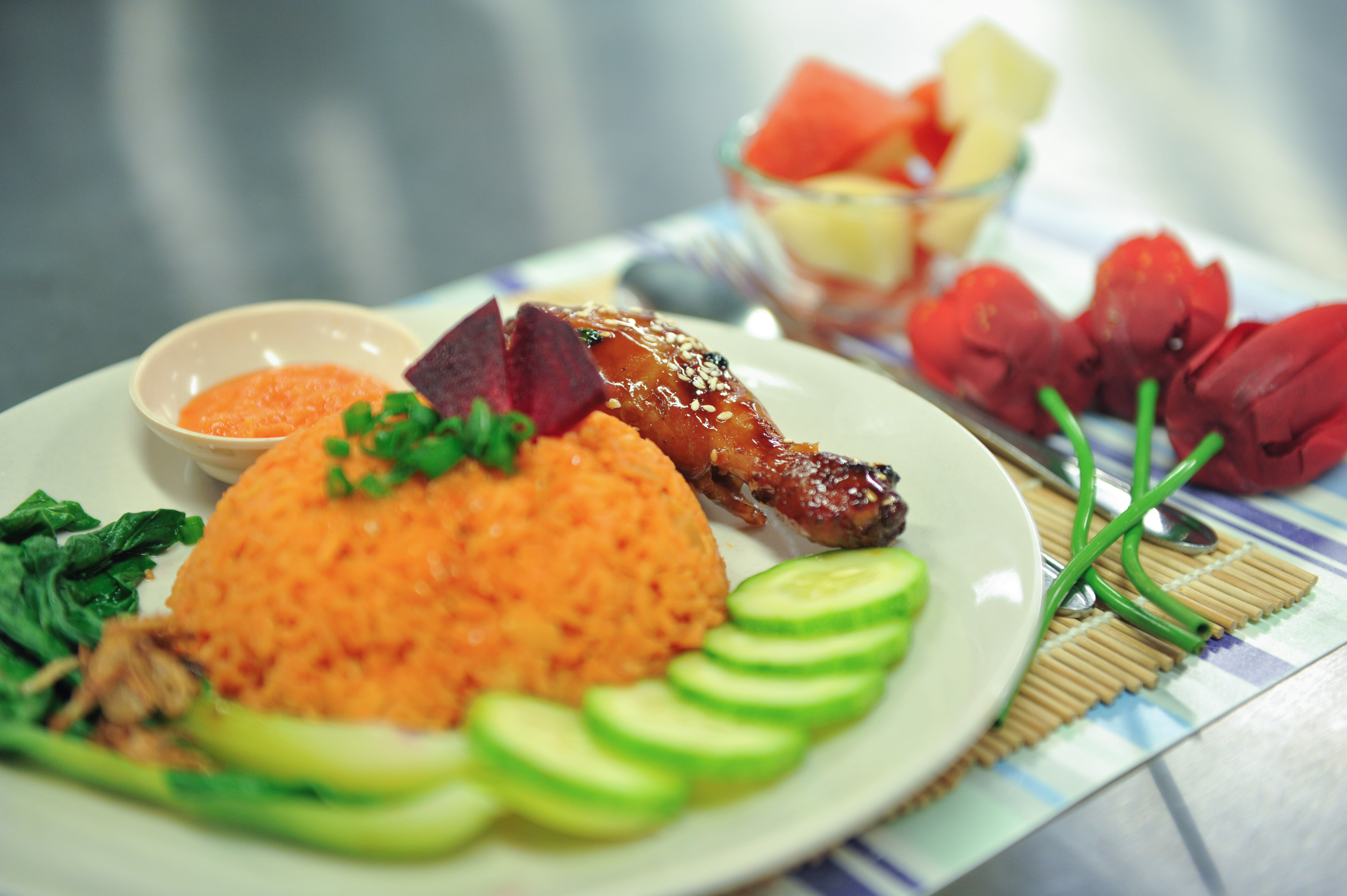 However, through constructive criticism from Chef Muluk of Nestle, students managed to make changes to the recipe without affecting the quality of the dishes. The challenge did not end when the final recipes were chosen, oh no. Students then had to dip their toes into accounting where they had to learn how to budget for profitability, as well as marketing where they had to carry out promotional activities to sell their lunch sets to the IMU community. “Producing food for fifty people or more under four hours was also definitely not an easy task. It required an immense amount of cooperation among team members to communicate efficiently for a smooth progression of food preparation. It also involved a large amount of manpower and was an exhausting process but was ultimately satisfying to be rewarded with happy faces of customers,” said Chan.
However, through constructive criticism from Chef Muluk of Nestle, students managed to make changes to the recipe without affecting the quality of the dishes. The challenge did not end when the final recipes were chosen, oh no. Students then had to dip their toes into accounting where they had to learn how to budget for profitability, as well as marketing where they had to carry out promotional activities to sell their lunch sets to the IMU community. “Producing food for fifty people or more under four hours was also definitely not an easy task. It required an immense amount of cooperation among team members to communicate efficiently for a smooth progression of food preparation. It also involved a large amount of manpower and was an exhausting process but was ultimately satisfying to be rewarded with happy faces of customers,” said Chan.
“As tiresome as the whole project was, it turned out to be a huge success and was an unforgettable event that I would not have been able to experience without the support of IMU.”
Related article: “Exp-10-re a Better Lifestyle” with a Healthy Lunchbox


No approved comments.